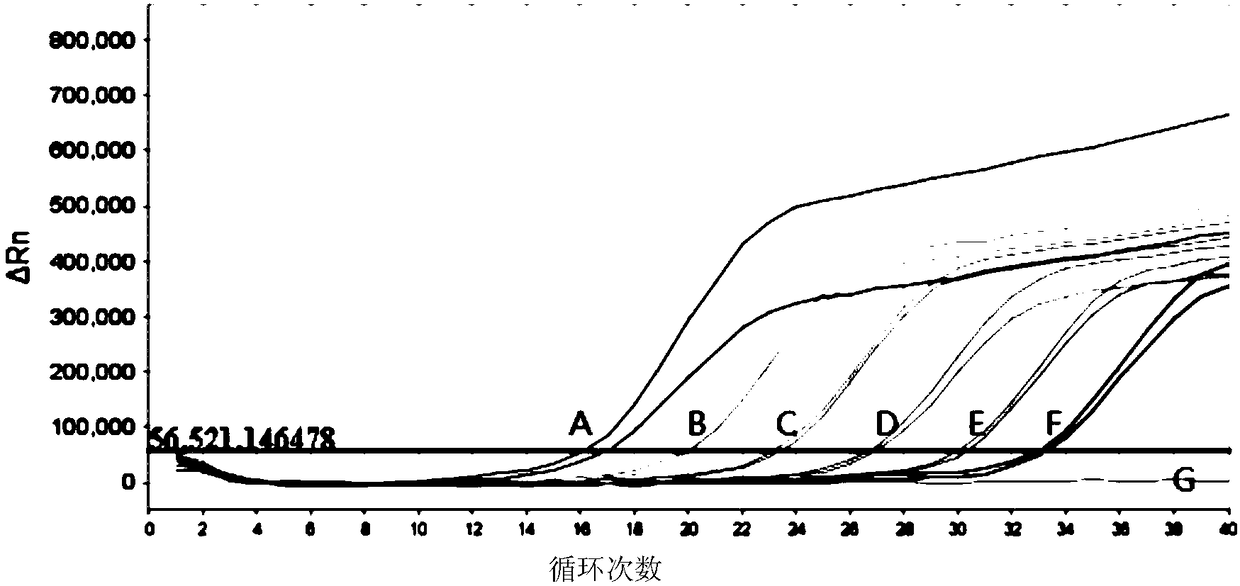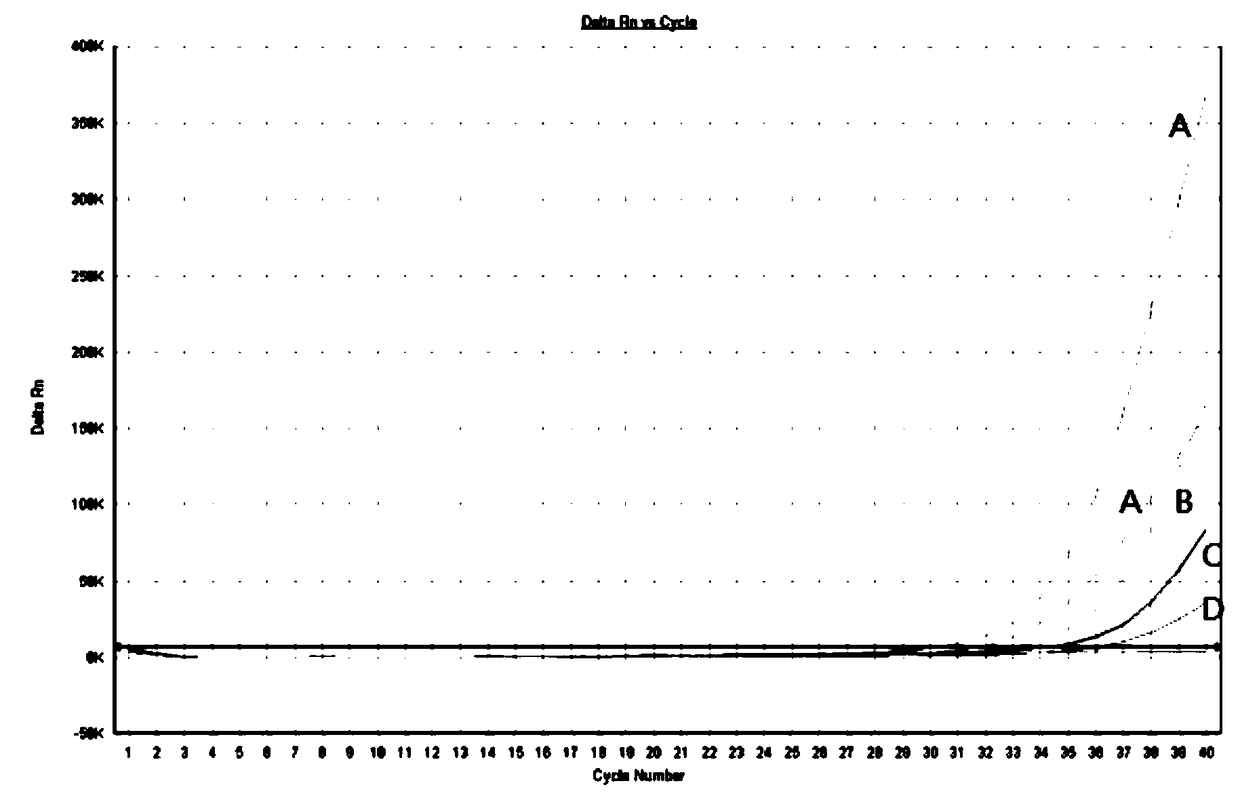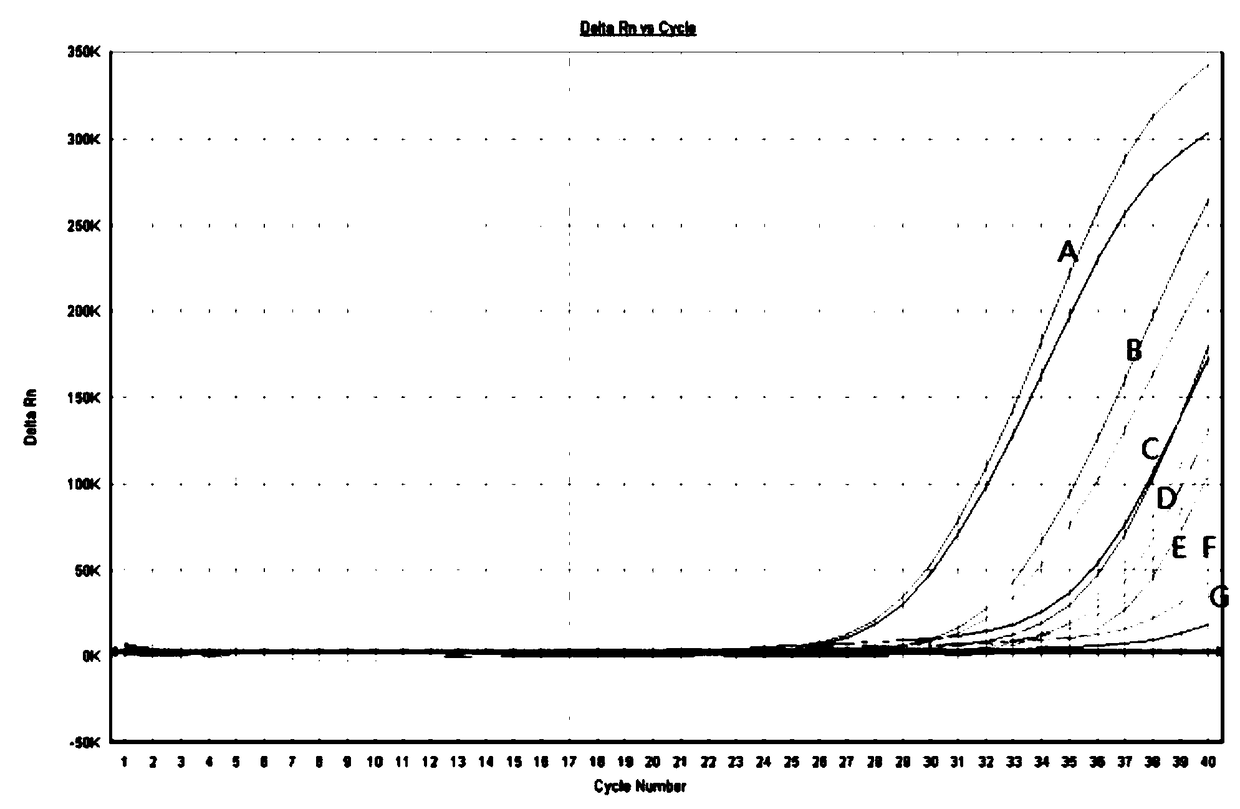Primers, probe, kit for detection of CHO nucleic acid residue and detection method
A detection method and kit technology, applied in the field of molecular biology, can solve the problems of DNA hybridization method such as long experimental period, inability to detect single-stranded DNA, and lack of sequence specificity, and achieve the significance of people's drug safety and detection accuracy and increased sensitivity without cross-reactive effects
- Summary
- Abstract
- Description
- Claims
- Application Information
AI Technical Summary
Problems solved by technology
Method used
Image
Examples
Embodiment 1
[0086] Example 1 is used for the design of primers and Taqman probes for real-time fluorescent quantitative PCR detection of Chinese hamster ovary cells (CHO)
[0087]Referring to the Chinese hamster genome sequence (Genome ID: 2791) included in GenBank, the conserved regions of Chinese hamster ribosomal 18s gene, ND1 gene, and ACTB gene were selected, and ABI PrimerExpress 3.0 real-time fluorescent quantitative PCR primer design software was used to design synthetic primers and Taqman probes. Needle. For the fluorescent labeling of the probe, FAM (5' end) was selected as the reporter luminescent group, and TAMRA (3' end) was used as the quenching group.
[0088] Typical primer pairs and probe sequences are listed in Table 1 below:
[0089]
[0090]
[0091] Such as Figure 1a-Figure 1d As shown, the 10-fold serial dilution of the CHO nucleic acid standard real-time fluorescence quantitative PCR amplification curve, the result shows that the CHO-18s1 primer pair and pr...
Embodiment 2
[0093] Real-time fluorescent quantitative PCR detection of embodiment 2 Chinese hamster ovary cells (CHO)
[0094] 1. CHO positive quality control DNA extraction
[0095] The following operations must be carried out in the P2 laboratory negative pressure biological safety cabinet in strict accordance with the requirements.
[0096] (1) Put 100 mg of Chinese hamster ovary cells under sterile conditions into a 1.5 mL clean centrifuge tube, add 500 μL of extraction buffer (50 mM Tris pH8.0, 25 mM EDTA, 100 mM NaCl, 1% Triton X-100) and 20 μL ( 20mg / mL) proteinase K, in a water bath at 56°C for 30min.
[0097] (2) After lysing in a water bath, add 10 μL of magnetic beads (40 mg / mL, shake well before use), then add 250 μL of 30% PEG & 2M NaCl mixture, and vortex to mix.
[0098] (3) Rotate and mix the centrifuge tube in a mixer for 10 minutes (speed: 0.83-0.85 rev / s).
[0099] (4) After mixing, fix the adsorption on the magnetic stand, and observe with the naked eye that the mag...
Embodiment 3
[0129] The real-time fluorescent quantitative PCR detection kit of embodiment 3 Chinese hamster ovary cells (CHO)
[0130] Primers CHO-18s-F (10 μM) 100 μL, CHO-18s-R (10 μM) 100 μL, Taqman probe (10 μM) 70 μL and Taqman Mix1 used for real-time fluorescent quantitative PCR detection of Chinese hamster ovary cell (CHO) nucleic acid .5mL, CHO DNA (30ng / μL) 50μL, and sterilized double distilled water 1.5mL are packaged together to obtain a real-time fluorescent quantitative PCR detection kit for Chinese hamster ovary cell (CHO) nucleic acid.
[0131] To sum up, with the above technical solution, the embodiment of the present invention can very accurately detect the residues of CHO nucleic acid in Chinese hamster-derived biological products, which is of great significance for controlling the quality of Chinese hamster-derived related biological products. People's drug safety is of great significance. The detection method and the kit of the invention can be used for the detection of...
PUM
 Login to View More
Login to View More Abstract
Description
Claims
Application Information
 Login to View More
Login to View More - R&D
- Intellectual Property
- Life Sciences
- Materials
- Tech Scout
- Unparalleled Data Quality
- Higher Quality Content
- 60% Fewer Hallucinations
Browse by: Latest US Patents, China's latest patents, Technical Efficacy Thesaurus, Application Domain, Technology Topic, Popular Technical Reports.
© 2025 PatSnap. All rights reserved.Legal|Privacy policy|Modern Slavery Act Transparency Statement|Sitemap|About US| Contact US: help@patsnap.com



